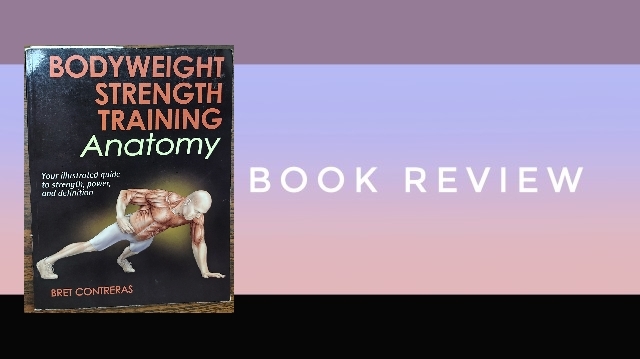By Bret Contreras
| Do you work out, want to work out, or are you getting back into the swing of things? Are you looking for a new routine? Want to increase your physical education knowledge? Have you already learned the basics of, “Eat more, lift more,” but still find that something is missing.
| Well you could be like me then. I’ve worked out off and on since highschool, but always struggled to find a consistently challenging but doable routine. One that made me feel good, didn’t take too much time to perform, and produced results. Calisthenics (and yoga) has always appealed to me, but I didn’t understand how to make a well balanced, progressively challenging routine until I read the book “Bodyweight Strength Training Anatomy” by Bret Contreras. Then it finally just clicked for me.
| I consider this to be a great resource for those interested in calisthenics. Though it is a bit brief with only a total of 155 exercises, if you include the variations, but this brevity is refreshing when you get down to the last 15 or so pages. These final pages contain the most concise and useful information about different training goals, workout variables to consider, and how to make an effective and personalized workout routine tailored to your goals and preferred work out style.
| Throughout the book what Bret Contreras is best at communicating to the reader is how to make an exercise either more or less challenging. You can increase or decrease the lever or elevation of your exercise, do single limb varieties, or add an extra movement to the exercise just to list a few options. Also, as this is a part of the Human Kinetics line of books, you get a good understanding of each muscle or muscle group that is being worked out during each exercise with detailed illustrations. I especially appreciated the notion that for every push exercise you need to do a pull exercise. I didn’t get that concept while using free weights, but with calisthenics you have to be more creative. Luckily this book helps you to think more creatively for such purposes. Though I would personally advise anyone interested in calisthenics to invest in a set of gymnastic rings and some rope to make things easier on themselves.
| Any conclusionary statements? Learning calisthenics can be helpful for anyone. Work on the road? Building coordination for a physical activity? Young? Old? Calisthenics is a good tool in your physical training tool belt, and this is one of the better workout guides out there (I say that after having purchased and read a few). It does have a few weaknesses though. It’s more suited for beginner and intermediate muscle builders (most of us might I add). It could have explained the movement patterns of some of its workouts a bit better, and, as I mentioned earlier, I would have appreciated more exercises. Otherwise, it has changed some of the ways I work out, and maybe it can for you, too.
— TBryantS
